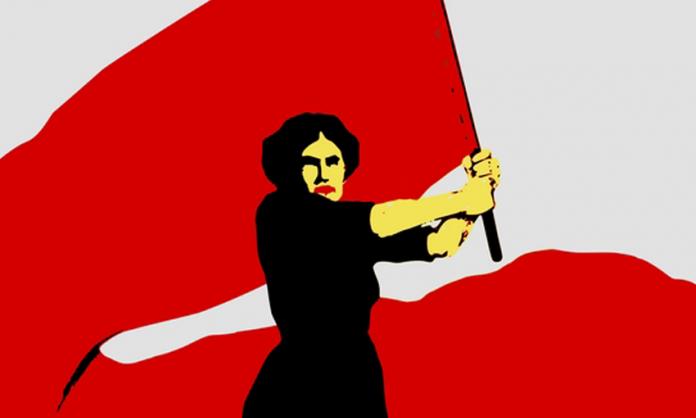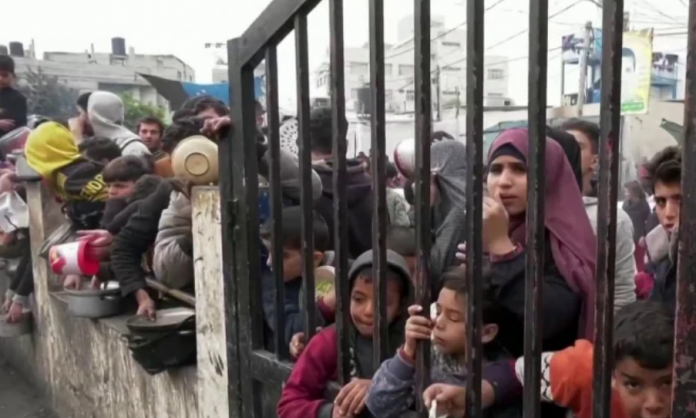Women’s oppression looks quite different today than 60 years ago. Women’s rights are more accepted now, women are a bigger part of the workforce, contraception and abortion are legal in much of the world. There are more women world leaders and CEOs than ever before. At the same time, the vast majority of women, even in a wealthy country like Australia, are still paid less on average than men, still do most of the unpaid child care and other domestic labour in the home and still have to contend with demeaning sexist stereotypes.
This material reality is important: the popular understanding of oppression today is that it is largely a matter of derogatory language or negative attitudes towards particular groups, and that it most egregiously affects minorities that are largely misunderstood or marginalised from mainstream society. But two of the most important oppressed groups—workers and women—are not minorities at all. Their oppression is all the more important and acute because of this: both are vital to keeping the capitalist system ticking over, and therefore substantial economic, cultural and social resources are invested in keeping them in their place and ensuring they continue to fulfil their subordinate social and economic role.
They might not face the same sort of day-to-day stigma that some other groups face, but this is not the key measure of oppression. Assuming that it is can be a barrier to the development of consciousness about the role and function of prejudice and social injustice. This, in turn, can hamper the ability of the mass of people to organise against it and fight effectively for liberation.
So it’s vital to understand what oppression is: a phenomenon that has its roots in the underlying economic functioning and social institutions of capitalism, and that affects social relations in all sorts of obvious and subtle ways. The oppression of the working class, and before that the labouring masses of different varieties throughout history, is the most crucial to the maintenance of class society.
Marx identified that it is our ability to labour consciously that makes humans fundamentally different from other living things. It is our defining characteristic. Yet it is exactly this ability that is controlled by someone else in capitalist society.
The vast majority of the population today—the working class—have very little control over their work. It is their boss who decides what gets produced, how the workplace is run and how the job should be done. The majority who don’t control the means of production, and therefore can’t work for themselves, are forced to sell their ability to work and submit to the power of a boss in order to survive. Once they have a job, the boss pays them a fraction of the value of what they produce and takes the rest as profit, further widening the economic and power gap between those who control the wealth and those who create it.
The minority control that defines capitalism requires that the working class accept this arbitrary and unfair state of affairs. For capitalist exploitation to function smoothly, the ruling minority need to ensure that the majority have their rights curtailed, their creativity stunted, their lives controlled and their sense of self-worth diminished. This can mean outright violence, such as police attacking a picket line, but capitalism also keeps people in their place by undermining workers’ self-esteem and confidence, and reinforcing the idea that this is the natural order of things, about which nothing can be done.
Bosses and the politicians who serve them influence how workers see the world using the education system as well as their media empires, discriminatory government policies and division in workplaces. This conditions workers to accept the reality of society and helps turn them against each other, because a united working class can threaten the stability of the system.
Women’s oppression in capitalist society serves both to intensify the oppression of the working class—because women represent a large and particularly low paid section of the class—and maintain the social stability needed to ensure a steady supply of workers ready to be exploited. It is central to the functioning of the system.
Women enter the workforce and are oppressed as women as well as being exploited. The nuclear family, an institution that could not function without women’s oppression, imposes material and ideological pressures on women’s engagement in work. The workplace in turn has a huge impact on the experience of family life, changing it massively over the years without eliminating its core function for capital. Women’s working lives are shaped by their oppression as women, and the nature of that oppression is shaped by their exploitation as workers.
The labour market exerts considerable influence, for example, on supposedly private decisions, from how many children workers have, to whether a full-time wage (and whose) will be given up to do unpaid caring for children.
The world of work narrows the choices open to working-class women (and men). Economic necessity dictates that the higher earning parent should continue working while the other takes a break to look after children, regardless of the wishes of those involved. Given the gender pay gap, this will generally be the woman. This reduces the earning capacity and associated financial independence of women in the immediate and long term, and reinforces the idea that women’s paid jobs are still secondary to their key responsibility and supposedly natural inclination to care for others in the family.
At work, women are systematically disadvantaged, starting with lower pay. Women disproportionately work in casual and part-time jobs, which is a key contributor to their lower pay and status at work. They also tend to be concentrated in low-paid industries, which are low paid partly because women work in them. They earn considerably less than men (the gender pay gap) as a result of all these factors.
Combined with the lack of adequate child care and maternity leave, this creates a situation in which women are more likely to be marginalised and disadvantaged. The workplace is a key area in shaping and affecting the self-confidence, economic independence, personal choices and standard of living of the majority of women. This is a key part of the backdrop against which sexist ideas are formed.
At home, women continue to carry the major burden of domestic work, particularly that involving the care of children. Women’s oppression justifies this as somehow natural and inherent in women, done for love, not money. In reality, the family has major material and ideological uses for the bosses. Materially, bosses need future workers to be cared for from infancy to adulthood so they’re physically and mentally ready to work, as well as educated and trained in certain skills to meet the bosses’ changing demands. That is the key role of the family.
In terms of the family’s ideological role, workers have to be socialised to accept their own exploitation—to defer to the bosses, respect the rules, learn their place. The family—which increasingly includes single parents and same-sex couples—remains the key institution for the reproduction of labour power at little expense to the bosses. Without this essential service, there would be no profits, and no future for their system.
Undermining the stereotype of women as full-time homemakers hasn’t meant that women don’t still do most of the housework and especially the child care. Women continue to be subject to the pressures and demands of the family unit. Their oppression continues to undermine the confidence, aspirations and participation of women.
This, and the unequal position of women at work, are of enormous benefit to the capitalist class in lowering the overall wages bill and thus raising profits, in offloading the costs of bringing up the next generation of workers and in creating divisions within the working class, channelling discontent away from the bosses and weakening the potential for solidarity between workers.
Women’s oppression endures through challenges to capitalism, both internal and external. The system has demonstrated a remarkable ability to adapt and restructure while maintaining its basic social inequality. Just think of how expectations of women’s role shifted under the demands of wartime production in World War II, as child care and “femininity” were no longer reasons for women to stay at home, and jobs opened up even in “men’s work”. Women are now a permanent and significant part of the workforce, but this has not relieved them of their oppression in the family or made them equal at work.
Oppression most of the time works to keep people in their place. But at times, it can be a catalyst for resistance. This is partly about how conscious of oppression those who suffer it are. The same derogatory ideas that undermine people’s confidence to fight back most of the time can quickly transform into explosive anger as those same people reach the end of their tether. The riot at the Stonewall bar in New York in June 1969 took place after years of police harassment. Patrons at the Stonewall, an underground bar frequented by working-class lesbians, gays and transgender people, many of them Hispanic and Black, had had enough one night and fought back. A three-day riot ensued, and the gay liberation movement was born.
Rising consciousness of women’s oppression was also a factor in the union struggles for equal pay in Australia in the early 1970s. Combined with a rising tide of anger against all the demeaning stereotypes of women as sex objects as well as perfect housewives and mothers, more and more women workers reacted with strikes and angry protests against low pay, equal pay judgements that took years to implement, and the bosses’ failure to provide child care.
Women workers’ confidence to turn on the bosses was also boosted by the rising level of militancy across the working class at the time, from striking to smash anti-union laws to waves of successful strikes for wage rises. Those struggles revealed the basis for solidarity, the common class interest that potentially unites workers across all the divisions that capitalism creates and perpetuates.
Precisely because women are much less marginalised than most other oppressed groups, because their oppression is therefore so central to capitalism’s profitable functioning—both via the family’s role and because they form half the working class—their struggles can have a widespread impact. For anyone concerned with fighting for a world without oppression of any kind, understanding the forms of oppression that are most central to capitalism, and that have the potential to drive large-scale resistance, is absolutely crucial. From this perspective, what matters is not who or which group suffers more, but what can best weaken the foundations of the system that depends for its existence on the oppression of the majority.











